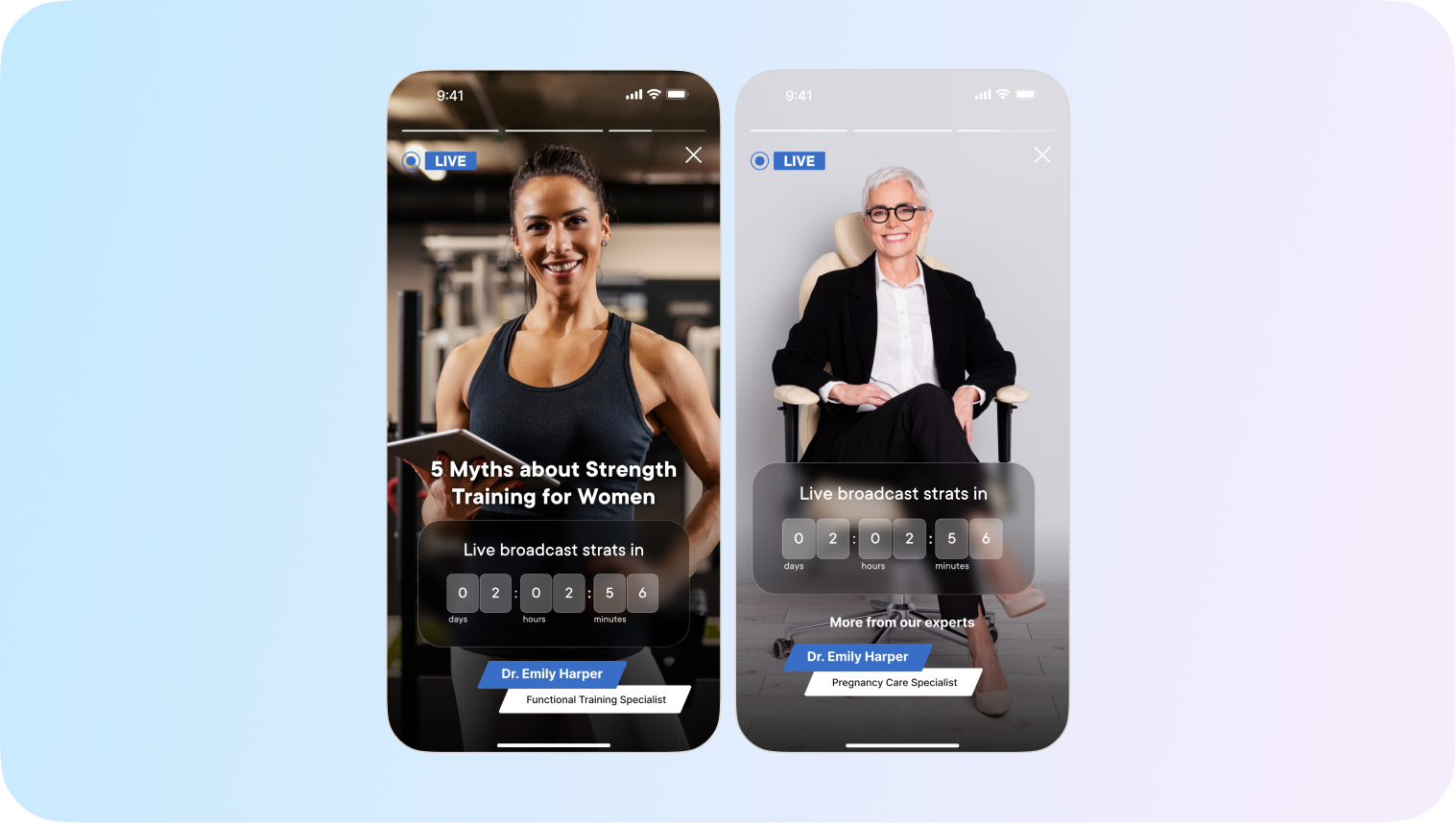
Mobile App Personalization Examples of 2022
If you require a rapid increase in the majority of your mobile metrics (which also includes the personalization and engagement ones), then mobile app personalization is your key answer.
.jpg?2025-11-14T09:43:42.256Z)
TOP 12 In-App Gamification Campaigns

Karina
Author @ InAppStory
Events happen fast. Users move faster. And mobile is often the first and only screen that matters during those moments.
Whether it’s a seasonal sale, a product launch, a livestream, or a physical event with digital components, the mobile app should not be an afterthought. Used correctly, it becomes the most powerful tool for keeping attention, driving action, and extending the value of the event beyond the scheduled date.

This guide offers practical strategies for using mobile apps effectively during event-based campaigns. It highlights how real-time communication, subtle behavioral nudges, and user-focused features can boost engagement and improve results.
Push notifications are noisy. Emails get lost. What matters is reaching users when they are already inside the app and ready to act. In-app messages are designed for that moment. They deliver content exactly where the attention is. Unlike passive content updates, these messages appear contextually. They can guide, remind, or redirect without forcing the user to leave their current flow.
Example: If a user opens the app during an event window but hasn’t visited the promo section, a small banner can highlight the path. No delay. No friction.
Recommendation: Tie your in-app messages to behavior. Set triggers based on scroll depth, screen views, or time spent. Make the message feel like a helpful nudge, not an interruption.
Events attract traffic. But traffic alone is not enough. Without interaction, most users leave within seconds. That’s where gamification becomes useful. This doesn't mean complex game mechanics. Think simple, visual, interactive formats that reward actions. A spin wheel. A scratch card. A daily quiz. These are short experiences that create emotional momentum.
Example: Offer a limited-time prize for checking in daily during a three-day event. Or tie rewards to specific app behaviors like watching a product video or adding an item to a wishlist.
Recommendation: Gamification should be connected to your event goals. Use it to reinforce specific actions. Avoid overcomplicating the interface. Simpler formats lead to higher participation rates.
Most event campaigns treat users as a single audience. This creates irrelevant experiences that lower engagement.
Segmentation solves this. But instead of relying only on static user profiles, use in-app behavior as a signal. What a person does inside the app says more than what they clicked in a newsletter.
Example: A user who explored the event section but didn’t act can receive a time-sensitive offer the next time they return. Someone who already converted can be shown a thank-you screen or a referral prompt.
Recommendation: Build segments dynamically. Use app data like screen visits, previous interactions, and language preferences. Deliver content that adapts with the event lifecycle.
Most feedback forms arrive too late. Once the event is over, user attention drops. But inside the app, there is a small window of time when people are still mentally connected to what just happened.
Interactive elements like sliders, polls, or emoji-based ratings can be embedded directly into the app flow. These are quick to complete and easy to ignore if not relevant.
Example: Ask users to rate their event experience with a one-question poll after they redeem an offer or complete a game.
Recommendation: Keep feedback light and optional. Avoid redirecting users to an external survey. Stay inside the app to reduce bounce risk.
Here is the quiet blocker behind most slow campaigns. Every content update depends on a release cycle. Every promo banner needs a ticket. Marketing loses flexibility. Tech teams lose focus.
This is where no-code tools make a difference. When marketers can launch banners, change messages, or update gamified flows without developer help, execution becomes real-time. And that is exactly what event-based campaigns need.
Example: Midway through an event, the marketing team sees low interaction with a banner. They switch it out with a countdown game without touching code. Engagement rises immediately.
Recommendation: Use platforms that let non-technical teams own the content layer. The goal is not just speed. It is relevance. The more quickly you adapt to user behavior, the better the outcome.
Mobile marketing for events is not about pushing promotions. It is about showing up in the right place, at the right time, with the right message.
In-app messages help you speak clearly. Gamification builds attention into action. Behavior-based segmentation creates relevance. Embedded feedback closes the loop. And no-code tools keep teams agile when speed is non-negotiable.
If your event is built to move people, your app should move with them. Not one week later. Not after the next update. But now.

Read also